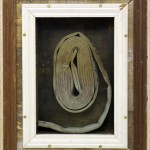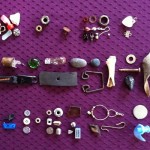The (Homeland) Tourist Icon
Week 4: Authenticity, Place and Product
In “Primitivist tourism and anthropological research: awkward relation”, Rupert Stasch (2019, p. 530) analyzes the categories of “tourist”, “anthropologist”, and “primitive human” as “icons”. This usage of the icon, Stasch writes, “foreground[s] even more how the categories are presences in their own rights” (Stasch 2019, p. 530). Central to Stasch’s understanding of the icon is its provisional character, that is, the ways in which “categorization is often experimental” and “that proposed categorizations can shift” (Stasch 2019, p. 530). A man with whom Stasch interacts during his fieldwork describes Stasch first as a tourist before rejecting that categorization and instead discussing tourists as third parties with Stasch himself. Similarly, tourists experiment with the imagined dispositions of anthropologists.
Stasch’s observation that “categories are not entities unto themselves, but travel with modes of application” is useful to understanding how the multiple categories of tourist change contextually (Stasch 2019, p. 530). In reading Stasch’s article along with the other texts for this week, I have been thinking about diaspora and homeland tourism industries and the ways in which people who engage in these travels do or do not identify themselves as tourists. To what extent do people who see themselves as discovering their heritage or reconnecting with past generations recognize themselves as tourists, and how might this differ from how they are viewed by those local to the sites they visit?
Source:
Stasch, R. 2017. Primitivist tourism and anthropological research: awkward relations. In JRAI 25: 526-545.
Contributed by JennySilver on 10/02/2020






